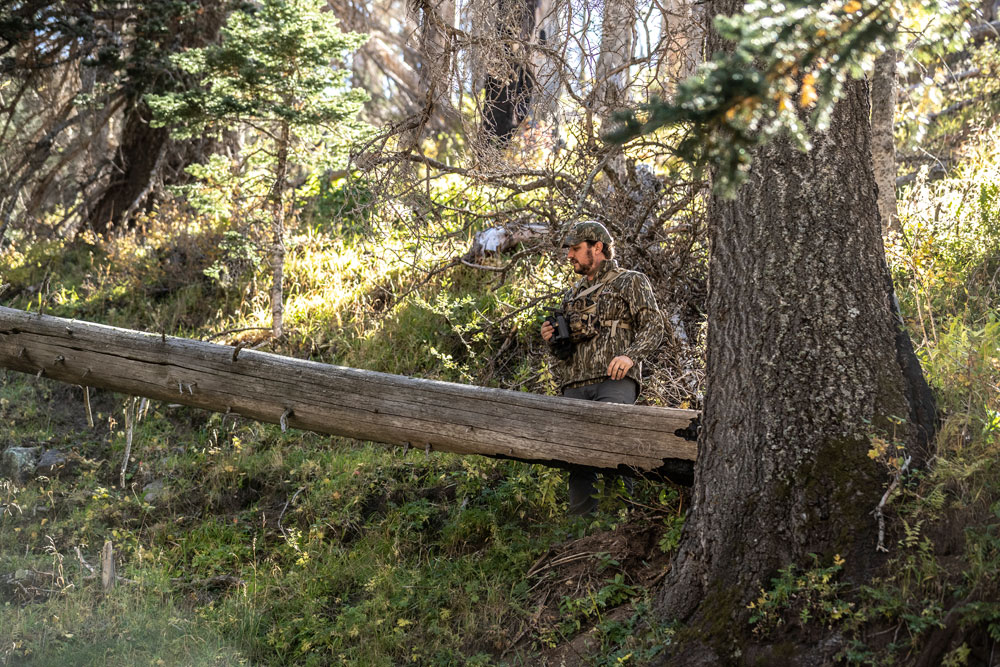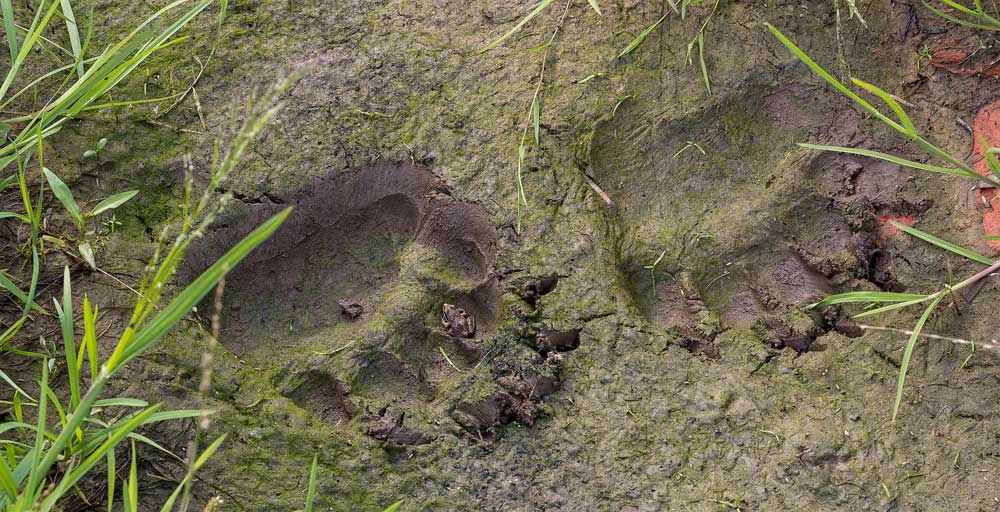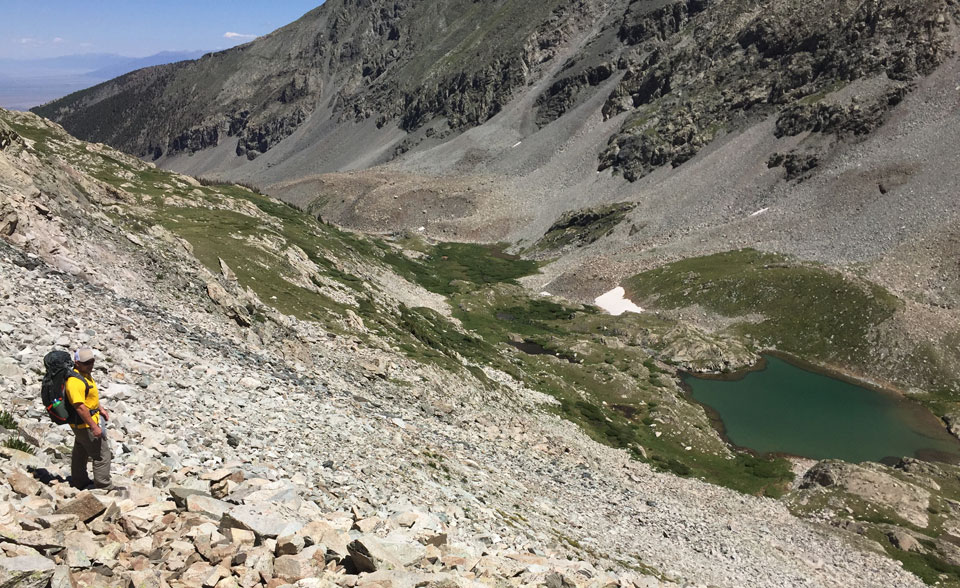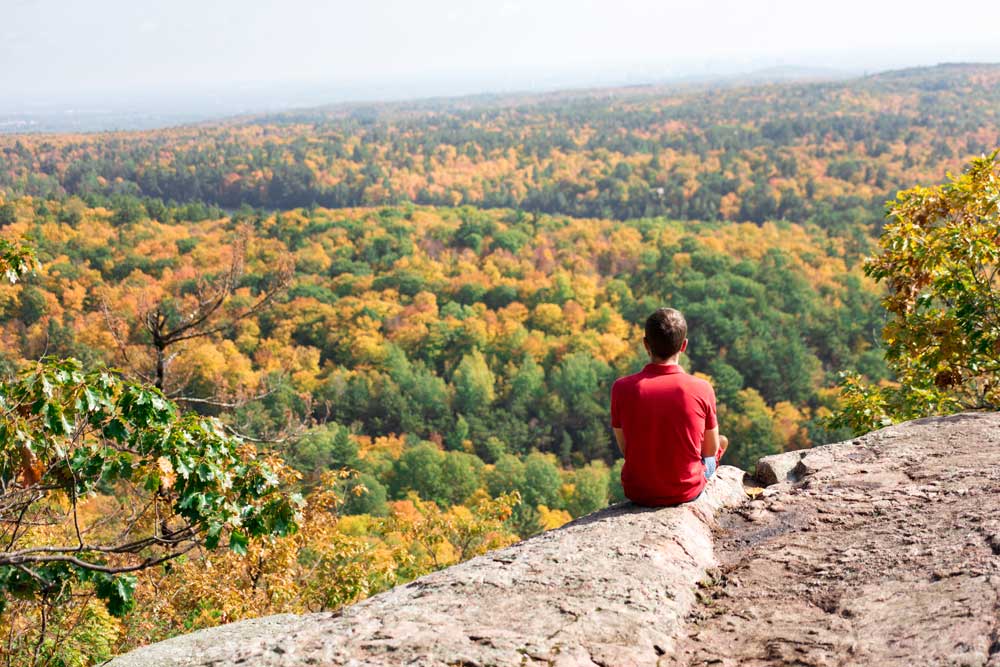Hiking on your own allows you to experience nature on a much more personal level. Without the distraction afforded by other human companions, you can focus on moving quietly and observing animals in their natural habitat. This can help hunters and fishermen grow in their craft, and it allows hikers to improve their overall confidence in outdoor survival skills.

However, hiking by yourself also comes with inherent risks. Nobody but you is watching your step, so you’re responsible for managing any weather, people, animals, or emergencies you might encounter. Here are six safety tips to help you take your adventure in stride, whether you’re an experienced hiker or it’s your first time heading out on your own.
1. Always Plan Ahead
When venturing out on a solo hiking excursion, it’s crucial to plan ahead. Know where you’re going, how long the trail is, roughly how long the hike will take, and when you’ll be back. Don’t just check the trail’s mileage: Check its elevation gain. A five-mile trail with 1,500 feet of elevation gain will feel much more challenging—and take much longer to hike—than a seven-mile trail with no elevation gain.
Additionally, check the weather forecast and the radar. If you’re hiking up peaks where you may encounter exposure to wind or where you will be walking through snow, head to a mountain weather forecast website. This website will be able to tell you the avalanche risk on a given peak, as well as what sort of wind and cloud cover you can expect. These are all crucial factors in keeping safe. Strong winds on a high peak in dense cloud cover can become dangerous, especially if you are underprepared.
Regardless of whether you’re solo peak-bagging or just heading out for a walk in the woods, acquaint yourself with the local flora and fauna. Are there bears in the area? Venomous snakes? Poisonous plants? Knowing what flora or fauna you may encounter can help you build your confidence when you head out on your own.

Once you know how long you will be out on your adventure and what conditions you will likely encounter, you can plan your clothing, emergency gear, and sustenance. However, no matter your location, always pack an extra fleece, matches, fire starter, emergency bivvy bag, and hand warmers, just in case you get caught out unexpectedly at night and need warmth. Pack a first aid kit, complete with triangular bandages, an extra bottle of clean water for rinsing wounds, and an Israeli bandage, just in case you get injured.
2. Keep Others in the Loop
Planning ahead is just one facet of hiking safely on your own. It’s crucial to keep others in the loop. Leave your itinerary and your expected time of completion with at least two people. More than anything, it’s a gesture of consideration toward people who care about your safety.
If you take precautions, it’s doubtful you will get lost or hurt. However, if you do encounter the unexpected, others will know where to come looking for you and how best to help you. To keep yourself extra safe, consider hiking with your dog. While you will need to bring a canine first aid kit, doggy bags, and any food or medicine your dog needs, they make excellent wilderness companions.
3. Pack Layers
Whether you’re heading out on a desert day hike or tackling a Vermont summit in winter, layering allows you to control your body temperature, regulate how much you sweat, and stay warm in an emergency.
A general rule is to wear lightweight, moisture-wicking base layers and to pair these with a warm mid-layer and waterproof outer layer. In the Arizona desert, your outer layer will probably look like a rain jacket that stays in your bag in case a storm blows over the mountains. In a Vermont winter, your outer layer will likely be a waterproof ski jacket.
When you’re hiking on your own, it’s especially important to make sure you have the layers you need for the climate you’re exploring. If you encounter an emergency, you may need to stay put or overnight in the wilderness. For these reasons, don’t just pack layers for the day: Pack enough layers to keep you warm at your region’s nighttime low temperatures.
Always pack extra socks. Wet feet are a hiker’s worst nightmare, and they’re more prone to blistering.
4. Don’t Skimp on Sustenance
On any solo hiking trip, it’s important to pack enough food for the day and plenty of water. If you get stuck out for longer than intended and on your own, adequate supplies will become crucial and can help you combat post-hiking fatigue.
In addition to your standard hiking meals, pack at least 2,000 calories of compact, lightweight emergency rations. This can be anything from chocolate to nuts to energy bars.
If you’re planning on filtering water from a stream mid-hike, have extra filtration tablets or a reusable water filtration system in addition to a back-up supply of bottled water—just in case the stream is dry.

5. Knowledge and Tools
You need knowledge, tools, and the skills to use them to be at your most confident in the wilderness.
Aside from the basic flora and fauna of the area, be aware of where the water is safest to drink. Practice fire-building and constructing a shelter before you head out. Be prepared for any first aid scenarios. If possible, learn some of the edible plants in your area. That way, if you ever get caught out longer than expected, you will know your options.
In the northeast woods of the United States, many voracious weeds like lamb’s quarter, purslane, and mallow are far more nutritious than spinach. Wood sorrel boasts high amounts of Vitamin C and a delightful tang, thanks to the presence of the terpene limonene. As History Channel’s Pro-Caveman Donny Dust says, “the more you carry in your head, the less you will need to carry on your back.”
Packing paracord, a multi-tool, hunting knife, or EDC knife can help you prepare food, cut wood for kindling, make a fishing spear, build a shelter, or cut bandages in an emergency.
6. Ease into It
Confidence is key in making your wilderness experience enjoyable. Doubting your abilities and feeling afraid does not make for a pleasant experience. If you feel intimidated by a solo wilderness adventure, consider starting small and making incremental steps toward your goal.
Go on a short hike in an area you’re familiar with and build your confidence, knowledge, and abilities from there. Practice your fire- and shelter-building skills in the backyard. If you want to go on a long hike and test your physical limits on the weekend, prepare with strength training and cardio sessions throughout the week. Soon enough, you’ll be embarking on the solo adventures of your dreams.

Final Thoughts
Preparing for a solo adventure is fun and exciting. The experience often turns into a test of your pragmatism, independence, and willingness to test your mental and physical limits. The rewards of solo hiking adventures are numerous. From an increased self-awareness to better animal observation skills and greater awareness of local flora, you will grow both as an outdoorsman and a conservationist.



























